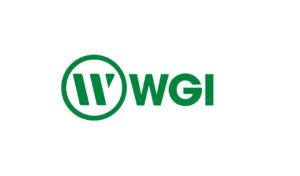Study outlines alternatives for Kansas rail passenger service
Written by jroodFebruary 14, 2001 Four alternatives for state-sponsored passenger rail service between Kansas City, Oklahoma City and Fort Worth are detailed in a study released today by Amtrak and the Kansas Department of Transportation. Start-up costs of the alternatives, which are in 2009 dollars and based on 100 percent on-time performance, range from $156 million to $479 million and the annual operating support range from $3.2 million to $8 million. Annual ridership estimates of the four alternatives range from 65,900 to 174,000.
Each of the options in
the study, which was prepared for KDOT by Amtrak with BNSF input, restore
passenger rail service to Wichita and five other cities in Kansas and Oklahoma
that lost Amtrak service during federally-mandated cuts in 1979.
"I am pleased that we have
completed this first step. With this study in hand, we can begin to have the
kind of meaningful dialog that is necessary for Kansans to make a decision
about how to proceed with passenger rail in our state," said Kansas
Transportation Secretary Deb Miller.
"Growth in
state-supported corridors is an important part of our future at Amtrak," said
Michael Franke, Assistant Vice President, Policy & Development, noting
Amtrak is the passenger rail operator of choice of 15 states. "We look forward
to working with leaders of Kansas to provide Amtrak service as a mobility
choice that is dependable, convenient, safe, economical and environmentally
friendly.
The following are brief
descriptions of the four alternatives. A full description of each is included
in the study, which can be viewed – along with supporting materials – on the
KDOT Web site at www.ksdot.org.
Alternative 1 – This
nighttime service between Newton and Fort Worth would have an estimated annual
ridership of 92,500. It would require $114.3 million in infrastructure
improvements estimated by BNSF and $40 million estimated by Amtrak for
additional locomotives and railcars, with annual state operating support of
$3.2 million.
Alternative 2 – This
nighttime service between Kansas City and Fort Worth would have an annual
ridership of 118,200. It would require $274 million in infrastructure
improvements estimated by BNSF and $40 million estimated by Amtrak for
additional locomotives and railcars, with annual state operating support of
$5.2 million.
Alternative 3 – This
daytime service between Kansas City and Fort Worth would have an annual
ridership of 174,000. It would require $413 million in infrastructure
improvements estimated by BNSF and $63 million estimated by Amtrak for
additional locomotives and railcars, with annual state operating support of $8
million.
Alternative 4 – This
daytime service between Kansas City and Oklahoma City would have an annual
ridership of 65,900. It would require $251 million in infrastructure improvements
estimated by BNSF and $56 million estimated by Amtrak for additional
locomotives and railcars and annual state support of $6.4 million.
Alternatives 1 and 2
studied extensions of the current Fort Worth-Oklahoma City Amtrak Heartland
Flyer trains to Newton or Kansas City. The Heartland Flyer is jointly sponsored
by the states of Oklahoma and Texas with Amtrak.
Not included in the study
are the cost estimates of renovating or building stations and boarding
platforms, which are assumed to be local costs.
The next of many steps
required before rail service can be implemented is selection of one of the
alternatives through a public process involving the Oklahoma, Texas and
Missouri departments of transportation, legislators and public officials from
the four states and passenger rail advocates. KDOT then must complete a Service
Development Plan (of which Kansas and Oklahoma are sharing the cost), and a
state rail plan. In addition:
• Funding must be secured
for capital requirements and annual operating support.
• Detailed discussions
and formal negotiations must take place between Amtrak, BNSF and the
departments of transportation in Kansas, Oklahoma, Texas and Missouri.
• Railcars and
locomotives must be procured and stations must be developed.
• Infrastructure improvements
must be completed.
• Additional Amtrak
personnel must be recruited and trained.





